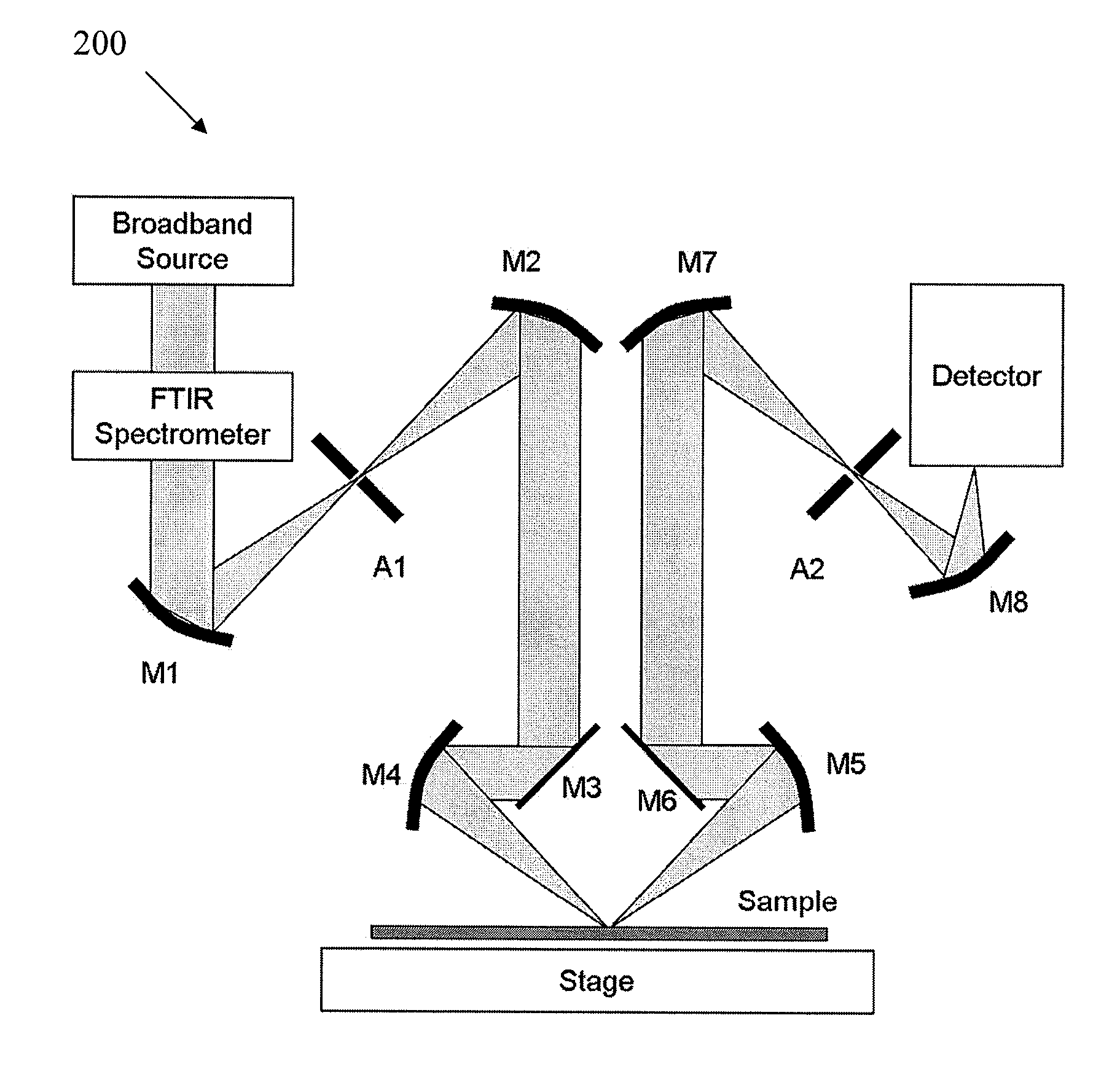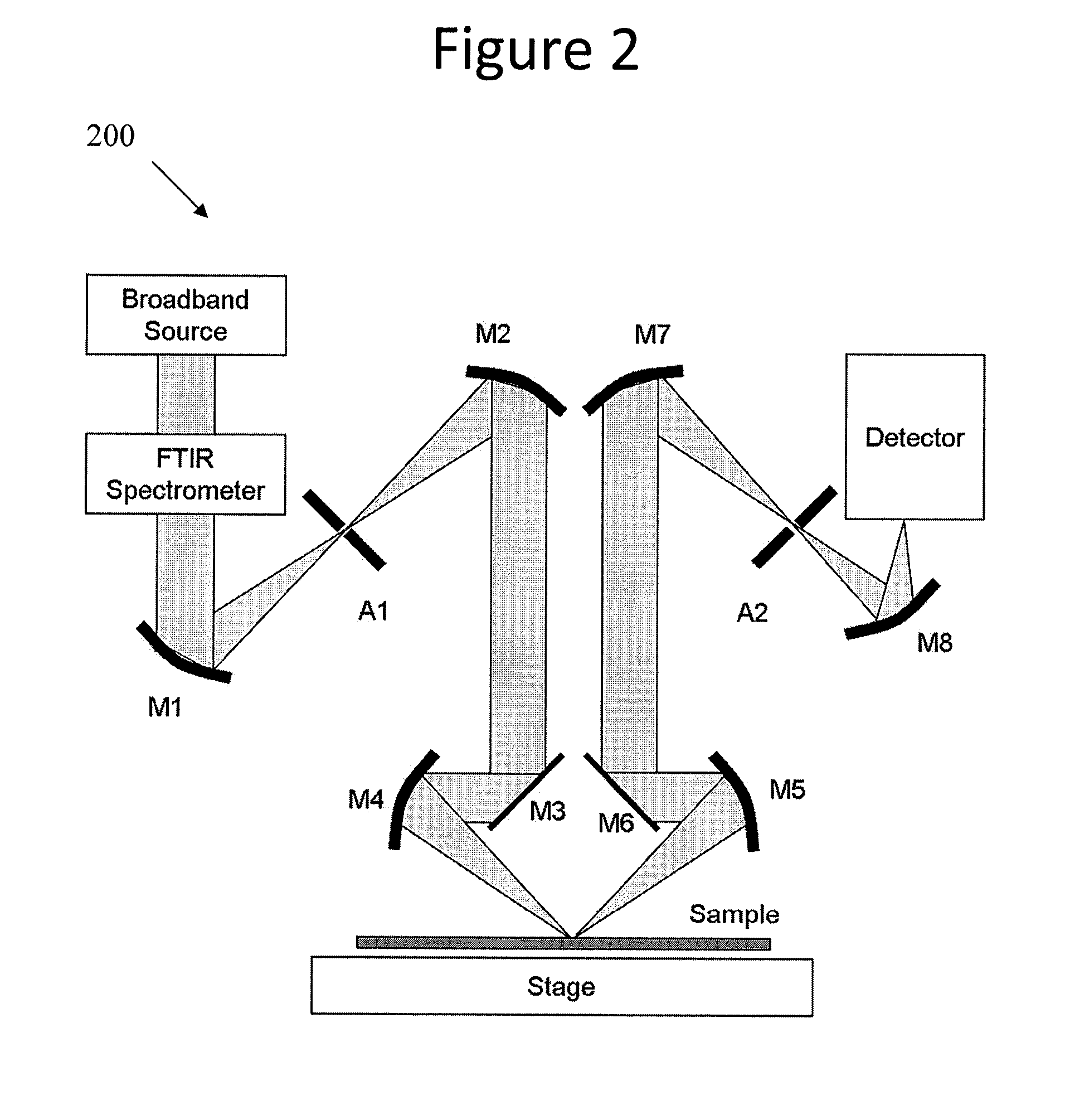Measuring Diffractive Structures By Parameterizing Spectral Features
- Summary
- Abstract
- Description
- Claims
- Application Information
AI Technical Summary
Benefits of technology
Problems solved by technology
Method used
Image
Examples
example 1
[0048]FIG. 1 illustrates an array of linear trenches 100 etched in a substrate, e.g., a silicon substrate, with array pitch P of 1.5 micrometers (μm), trench depth D of 1.0 μm, and trench width W of 0.4 μm. This structure may occur, for example, in the fabrication of some power metal-oxide-semiconductor field-effect transistor (“MOSFET”) devices.
[0049] Array 100 is measured with a suitable measurement instrument 200, e.g., the IR3000 system mentioned above. This instrument has a wavelength range of 1.4 to 20 μm (corresponding to a wavenumber range of 500 to 7000 cm−1), and measures the reflectance spectrum of the sample at a 45° angle of incidence. The instrument design is based on a broadband light source coupled with an FTIR spectrometer and an optical system for illuminating the sample and collecting the reflected light, as shown in FIG. 2. On its path from the light source to the detector, the optical radiation is reflected by a series of mirrors M1-M8 and travels through apert...
example 2
[0059] A second example illustrates the utility of embodiments of the invention for more complex structures. FIG. 8 depicts a recessed linear trench structure 800 formed in an undoped epitaxial silicon layer 810 on a doped silicon substrate 820. Structure 800 is formed by etching trenches into the layer 810, coating the trenches with oxide 830, filling with polysilicon 840, and then etching polysilicon 840 to leave a recess 850 extending beneath the top plane of oxide 830. The pitch P is approximately 4.0 μm, with other dimensions approximately in proportion as indicated on the figure. Structure 800 may be found, for example, during formation of power semiconductor devices.
[0060] It is desired to measure the recess depth RD of structure 800 by analysis of its infrared reflectance spectrum. Due to the magnitude of the pitch P, the reflectance spectrum in the infrared is dominated by diffraction effects, and RCWA or a similar method is utilized to simulate model spectra. Substrate 82...
PUM
 Login to View More
Login to View More Abstract
Description
Claims
Application Information
 Login to View More
Login to View More - R&D
- Intellectual Property
- Life Sciences
- Materials
- Tech Scout
- Unparalleled Data Quality
- Higher Quality Content
- 60% Fewer Hallucinations
Browse by: Latest US Patents, China's latest patents, Technical Efficacy Thesaurus, Application Domain, Technology Topic, Popular Technical Reports.
© 2025 PatSnap. All rights reserved.Legal|Privacy policy|Modern Slavery Act Transparency Statement|Sitemap|About US| Contact US: help@patsnap.com



